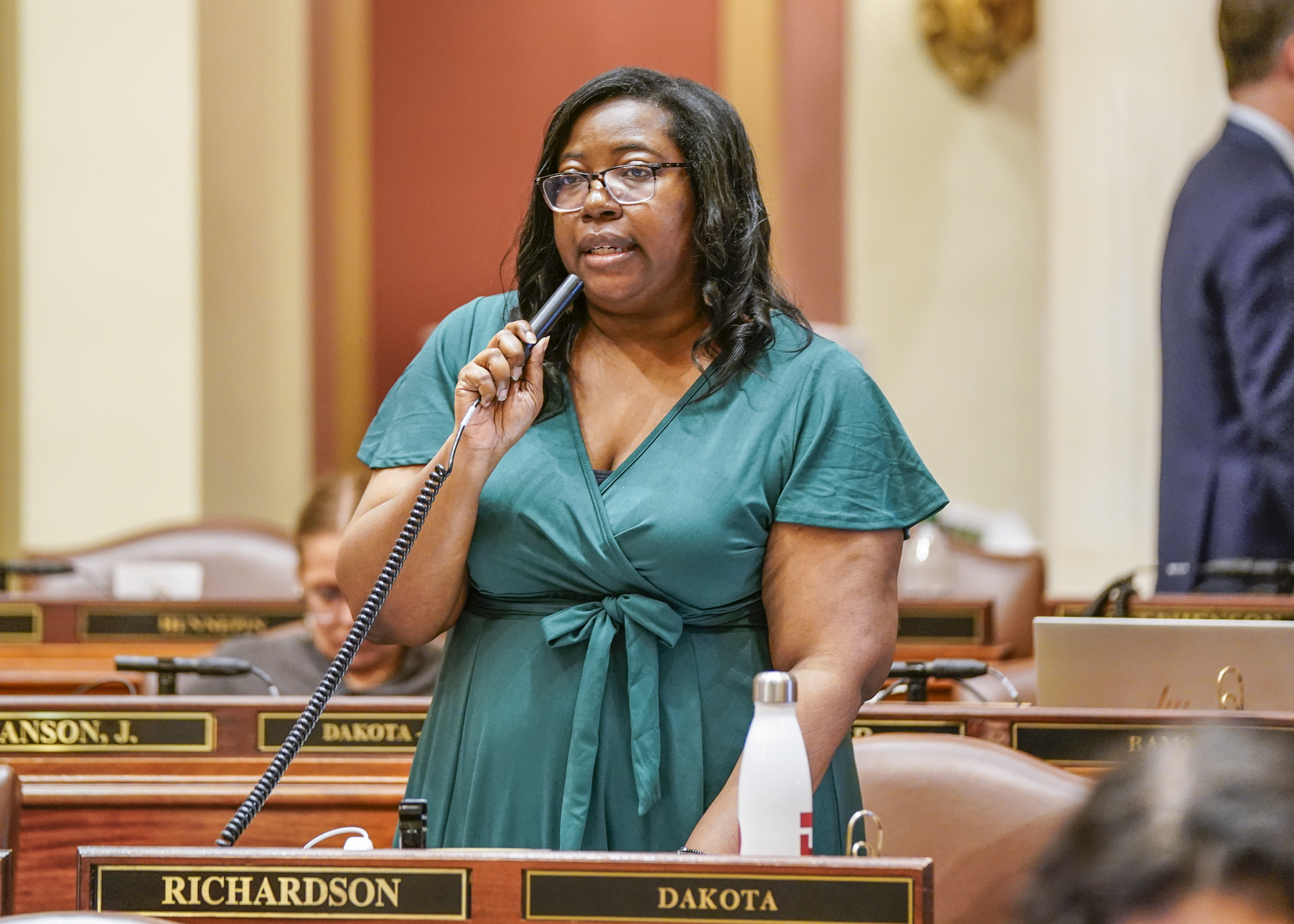House lawmakers repass paid family and medical leave legislation

“The need to care for ourselves is universal,” says Rep. Ruth Richardson (DFL-Mendota Heights).
She said that’s the impetus for the paid family and medical leave bill that would establish a state-run insurance program to provide Minnesota workers with up to 20 weeks of paid time off annually to deal with family or medical issues.
“It’s good day in Minnesota when we are able to work to ensure that families will be able to care for themselves and for their loved ones as well,” Richardson said Wednesday, at the start of a nearly four hour discussion on the conference committee report on HF2. She and Sen. Alice Mann (DFL-Edina) are the sponsors.
The House adopted the conference committee report and repassed the bill 68-62. It now goes to the Senate and, if it clears that body, to the governor who has said he will sign it into law.
Richardson said paid leave is a moral imperative and no one should have to choose between staying on the job to collect a paycheck and caring for a loved one.
Republicans say the state-run plan would be too burdensome for small employers who may not have enough employees on staff or be able to quickly hire new workers to cover the duties of employees taking paid leave.
They also objected to the legislative process that resulted in no Republicans being appointed to the conference committee, said House Minority Leader Lisa Demuth (R-Cold Spring). “Effectively … the voices of 48% of Minnesotans were completely shut out of the process.”
A Demuth motion that the House refuse to adopt the report and return it to the conference committee was voted down 68-62 along mostly party lines.
Republicans are not against paid leave plans per se but argue that mandating a government-run plan is the wrong way to go.
“We’re doing it. Eighty percent of the businesses are already doing it,” said Rep. Jeff Backer (R-Browns Valley).
However, Richardson put forth a different picture on the availability of paid leave.
“Only one in four people have access to paid family and medical leave,” she said, adding current leave programs are inconsistent and there are socioeconomic disparities among those who have access to paid leave and those who do not.
High-income people working for large corporations who can better manage a financial crisis are more likely to have employer-paid leave plans, she said, while low-income people who may be one paycheck away from financial devastation do not.
Backer was one of several Republicans promoting an alternative plan they say would better serve both employers and employees: Small businesses would be incentivized to participate in a paid-leave plan through tax credits, with the private sector operating the program.
“HF2 mandates a new payroll tax that will impact everyone earning a paycheck in Minnesota and the massive government agency it creates is not something that Minnesotans are asking for,” Rep. Dave Baker (R-Willmar) said in a May 2 statement.
What’s in the bill?
The annual maximum length of paid benefits would be 20 weeks, and time off could be used for bonding, family care, medical care related to pregnancy, serious health condition, qualifying exigency, or safety leave. It would be available starting Jan. 1, 2026.
A self-funding family and medical insurance benefit account modeled after the state’s unemployment insurance fund would be created and managed by a new Family and Medical Benefits Insurance Division within the Department of Employment and Economic Development.
A new tax on employers and employees would ultimately fund the account; the premium rate would be 0.7% of the employee’s wages, at least half of which would be paid by the employer and the rest paid by the employee.
Conferees agreed to appropriate $648.3 million in fiscal year 2024 as “seed money” so benefits could be available beginning Jan. 1, 2026. At that point the taxes on employers and employees would begin with the goal of the insurance fund being self-sustaining going forward.
[MORE: View the final agreement spreadsheet]
Leave benefits would be unattached to a specific job or a specific employer, which would be particularly helpful to self-employed or gig workers, who could opt in to join the program.
Employers would be allowed to institute private plans and not be required to pay premiums into the state program. However, private plans would need to meet or exceed all the same rights, protections, and benefits provided to employees under the state plan.
Related Articles
Search Session Daily
Advanced Search OptionsPriority Dailies
Speaker Emerita Melissa Hortman, husband killed in attack
By HPIS Staff House Speaker Emerita Melissa Hortman (DFL-Brooklyn Park) and her husband, Mark, were fatally shot in their home early Saturday morning.
Gov. Tim Walz announced the news dur...
House Speaker Emerita Melissa Hortman (DFL-Brooklyn Park) and her husband, Mark, were fatally shot in their home early Saturday morning.
Gov. Tim Walz announced the news dur...
Lawmakers deliver budget bills to governor's desk in one-day special session
By Mike Cook About that talk of needing all 21 hours left in a legislative day to complete a special session?
House members were more than up to the challenge Monday. Beginning at 10 a.m...
About that talk of needing all 21 hours left in a legislative day to complete a special session?
House members were more than up to the challenge Monday. Beginning at 10 a.m...